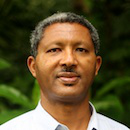Descriptions
Deforestation for agricultural expansion and forest degradation for fuel wood demand remain to be the two critical drivers of change in the forested landscapes of Ethiopia. The increased pressure from agricultural land expansion is expected to result in the deforestation of nearly 9 million hectares of forestland by 2030. At the same time Ethiopia aims to increase forest cover from the current 15.5% to 30% by 2030. Barriers to achieving this are the limited technical capacity in Ethiopia to support and derive innovation and also the limited engagement with private sector and civil society partners who can create sustainable and cost-effective forest sector development models.
UNDPs project "Institutional Strengthening for the Forest Sector Development Program of Ethiopia", implemented since 2015 and currently in the second phase, has been addressing these issues primarily by supporting capacity building efforts in phase 1 of the project. To make the achievements more sustainable, phase 2 now focuses on building technical capacities at various levels thereby catalyzing large scale investments in wider areas.
CIFOR is supporting UNDP in its efforts to sustain the progress made in the first phase. Three outcomes are expected: 1) capacity of the forest sector strengthened at strategic and operational levels; 2) multi-functional landscapes created in rural and urban areas, and 3) vulnerability of poor communities to extreme events reduced. CIFOR is involved in implementing activities in all of the proposed three outcomes even though most of its activities are under Outcome 2.




















